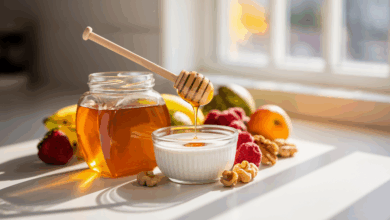How to Introduce Solids: 7 Stress-Free Tips for New Parents
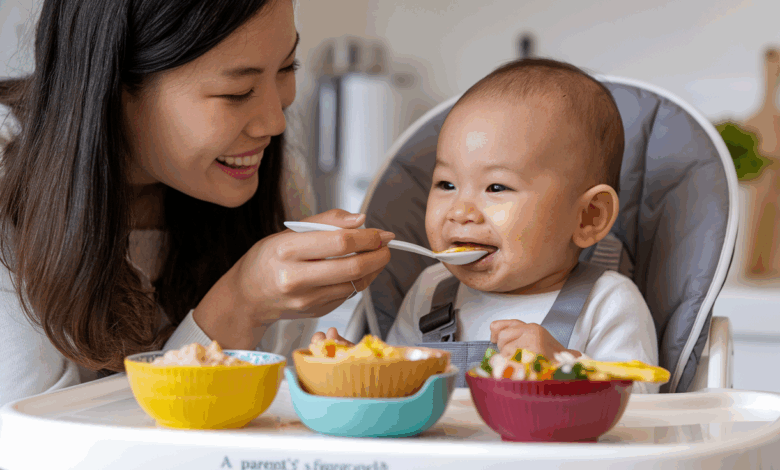
Congratulations, new parents! 🎉 You’ve reached an exciting milestone in your baby’s journey: introducing solid foods. But let’s be honest, this transition can feel overwhelming. How do you know when to start? What foods are safe? What if your baby refuses to eat? These questions can keep even the most confident parents up at night.
Don’t worry, we’ve got your back! 💪 Introducing solids doesn’t have to be a stressful experience. In fact, with the right approach, it can be an enjoyable adventure for both you and your little one. From first purées to finger foods, we’ll guide you through each stage of your baby’s culinary exploration. Our 7 stress-free tips will help you navigate this new territory with confidence and ease.
In this post, we’ll break down the journey of introducing solids into manageable stages, starting from 6 months onwards. We’ll cover everything from Stage 1 baby food basics to the more advanced Stage 5 meals. So, whether you’re just starting out or looking to progress to the next level, we’ve got you covered. Ready to turn mealtime into a fun and nourishing experience for your baby? Let’s dive in!
Stage 1 Baby Food | 6+ mos
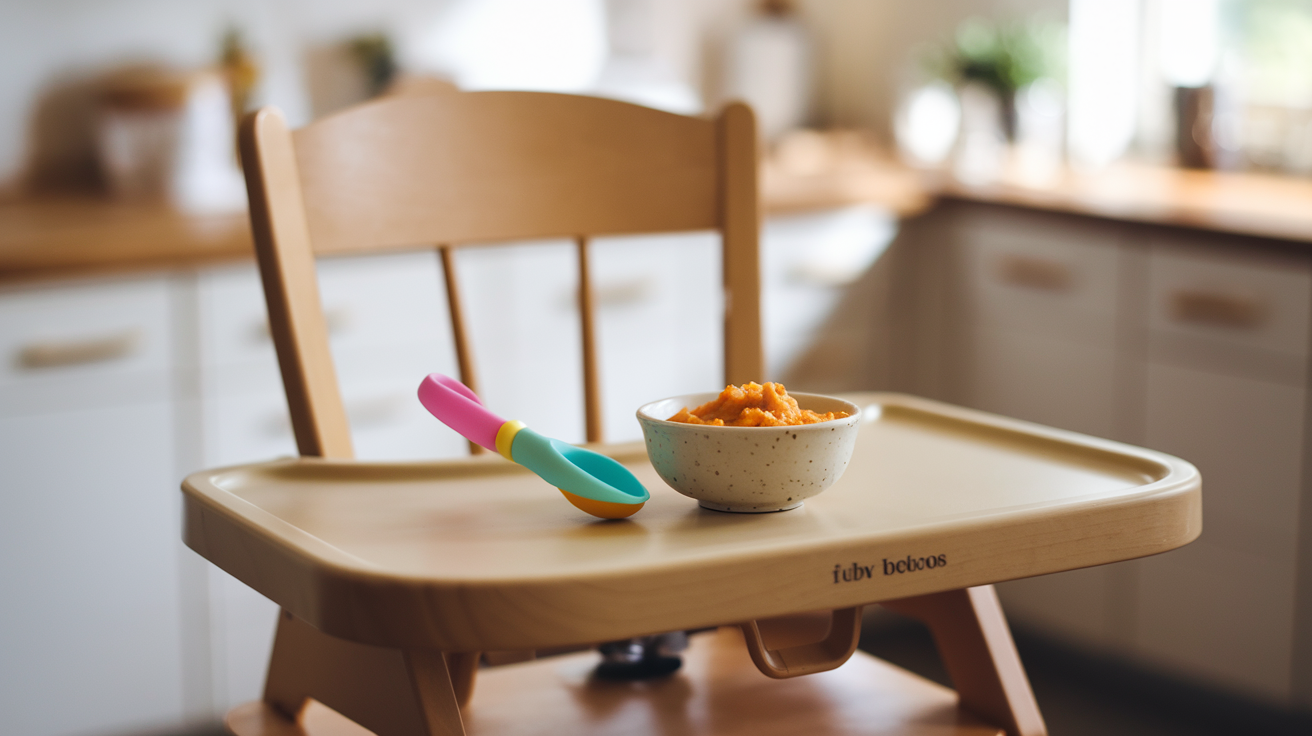
Stage 1 Baby Food | 6+ mos
Stage 1 baby food marks the exciting beginning of your infant’s solid food journey. At this stage, focus on single-ingredient purees with smooth consistency. Here’s a list of ideal first foods:
- Rice cereal
- Pureed fruits (apple, pear, banana)
- Pureed vegetables (sweet potato, carrot, peas)
| Texture | Consistency | Feeding Method |
|---|---|---|
| Smooth | Thin | Spoon-fed |
Introduce new foods one at a time, waiting 3-5 days between each to monitor for allergies. Start with small amounts, gradually increasing as your baby shows interest and tolerance. Remember, breast milk or formula remains the primary source of nutrition at this stage.
Stage 2 Baby Food | 6+ mos
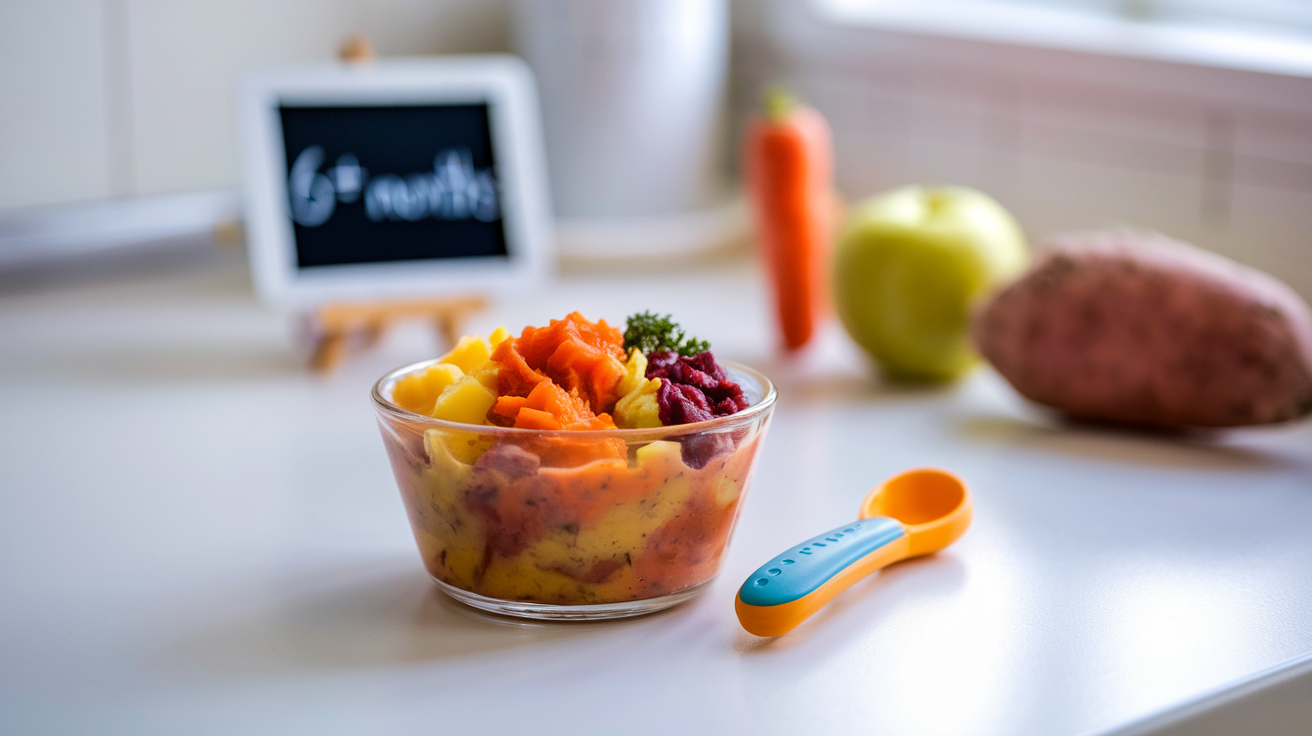
Stage 2 Baby Food | 6+ mos
Expanding Flavors and Textures
At this stage, babies are ready to explore more complex tastes and consistencies. Introduce:
- Mashed or finely chopped fruits
- Soft-cooked vegetables
- Well-cooked grains
- Pureed meats
Meal Planning
| Meal | Food Ideas |
|---|---|
| Breakfast | Oatmeal with mashed banana |
| Lunch | Pureed chicken with sweet potato |
| Dinner | Mashed avocado with rice cereal |
Now that your baby has adapted to basic purees, it’s time to gradually introduce more varied textures and flavors. This helps develop their palate and encourages self-feeding skills. Remember to watch for any signs of allergies and always consult your pediatrician before introducing new foods.
Stage 3 Baby Food | 7+ mos
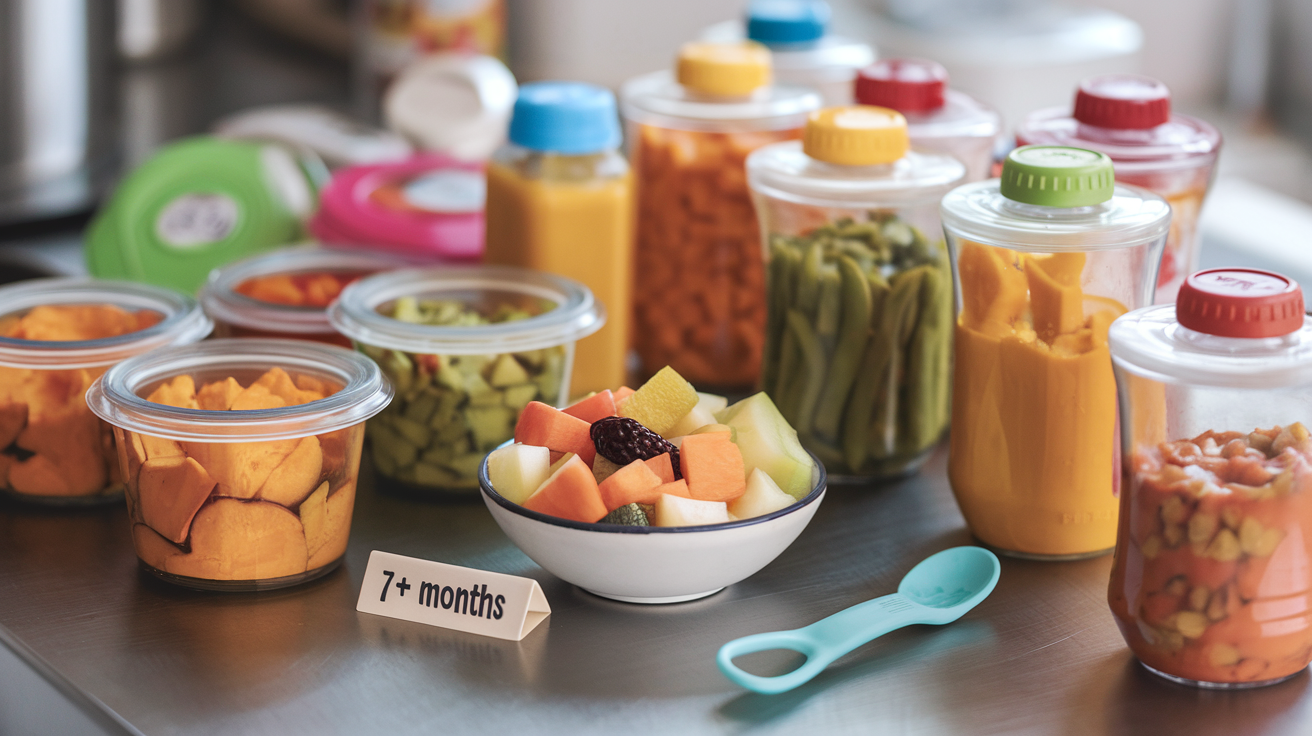
Stage 3 Baby Food | 7+ mos
Increasing Texture and Variety
At this stage, babies are ready for more complex textures and flavors. Introduce soft, mashed foods with small, soft lumps to encourage chewing skills. Offer a wider variety of fruits, vegetables, and proteins to expand your baby’s palate.
Feeding Schedule and Portion Sizes
| Meal Type | Frequency | Portion Size |
|---|---|---|
| Solid Food | 3-4 times/day | 4-6 tablespoons |
| Breast milk/Formula | 3-4 times/day | 24-32 ounces |
- Introduce finger foods like soft fruits and cooked vegetables
- Gradually increase meal sizes as your baby shows interest
- Continue offering breast milk or formula alongside solids
Stage 4 Baby Food | 8+ mos

Stage 4 Baby Food | 8+ mos
Expanding Textures and Flavors
At this stage, babies are ready for more complex textures and flavors. Introduce:
- Soft, diced fruits and vegetables
- Soft meats and fish
- Finger foods like pasta, cheese cubes, and toast strips
Meal Structure and Independence
Encourage self-feeding with appropriate utensils. Establish a meal structure:
| Meal | Suggested Foods |
|---|---|
| Breakfast | Oatmeal with mashed banana |
| Lunch | Diced chicken, steamed veggies |
| Dinner | Pasta with tomato sauce |
Stage 5 Baby Food | 8+ mos

Stage 5 Baby Food | 8+ mos
At this stage, your baby is ready for more complex textures and flavors. Offer a variety of foods, including:
- Soft-cooked vegetables
- Tender meats
- Pasta
- Soft fruits
See What Our Customers Say:
| Parent | Testimonial |
|---|---|
| Sarah | “My baby loves the variety of textures in Stage 5 foods!” |
| Mike | “The transition to table foods was so smooth with these options.” |
Parents appreciate the ease of introducing new flavors and textures at this stage. Many report increased independence in their babies’ eating habits, making mealtime a more enjoyable experience for the whole family.
We’ve got you covered.

We’ve Got You Covered
Introducing solids to your baby doesn’t have to be stressful. With our comprehensive guide to baby food stages, you’ll feel confident in your feeding journey. Here’s a quick summary of what we’ve covered:
| Stage | Age | Texture | Key Points |
|---|---|---|---|
| 1 | 6+ mos | Purées | Single ingredients |
| 2 | 6+ mos | Thicker purées | Combinations |
| 3 | 7+ mos | Soft chunks | Self-feeding |
| 4 | 8+ mos | Finger foods | Variety |
| 5 | 8+ mos | Table foods | Family meals |
Remember, every baby is unique. Trust your instincts and consult your pediatrician for personalized advice. Happy feeding!
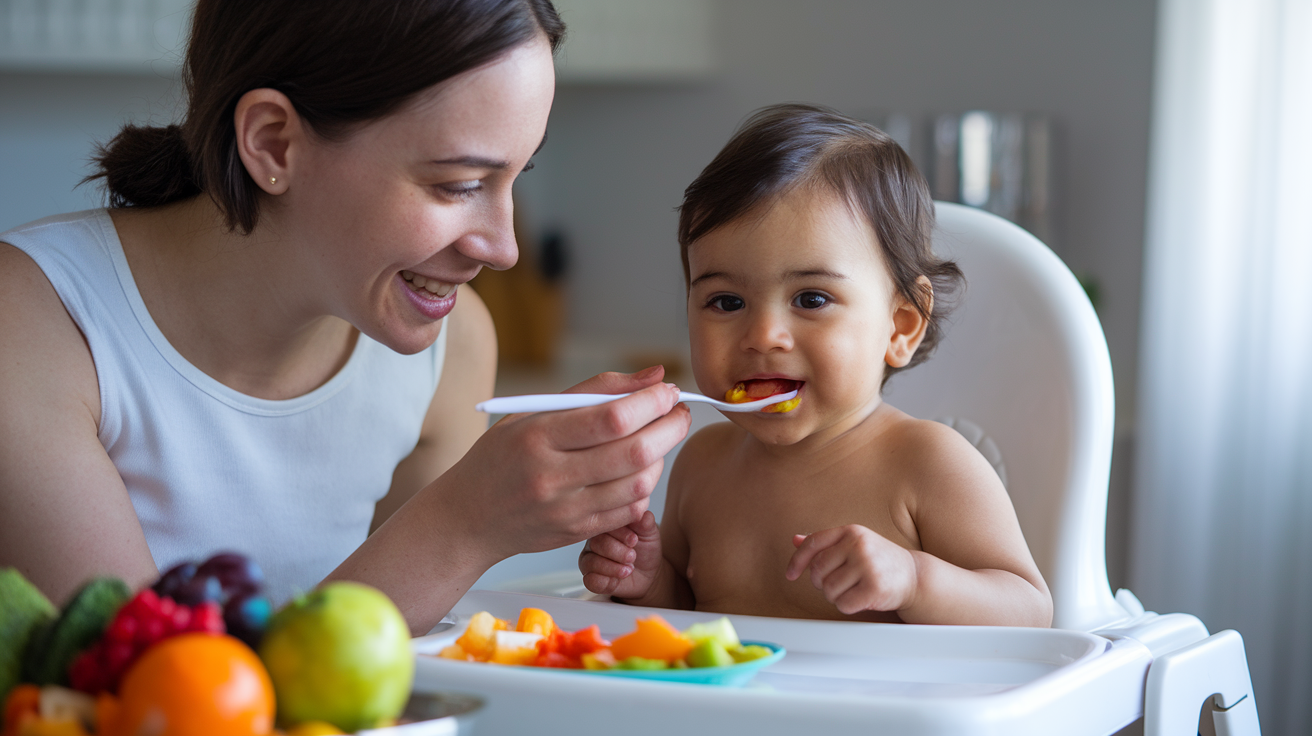
Introducing solids to your baby is an exciting milestone that marks a new chapter in their growth and development. By understanding the different stages of baby food and following the tips outlined in this guide, you can make the transition smooth and enjoyable for both you and your little one.
Remember, every baby is unique, and it’s essential to be patient and attentive to your child’s cues. As you embark on this journey, trust your instincts and consult with your pediatrician if you have any concerns. With the right approach and a positive attitude, you’ll be well-equipped to navigate this important stage in your baby’s life, ensuring they receive the nutrition they need to thrive.

